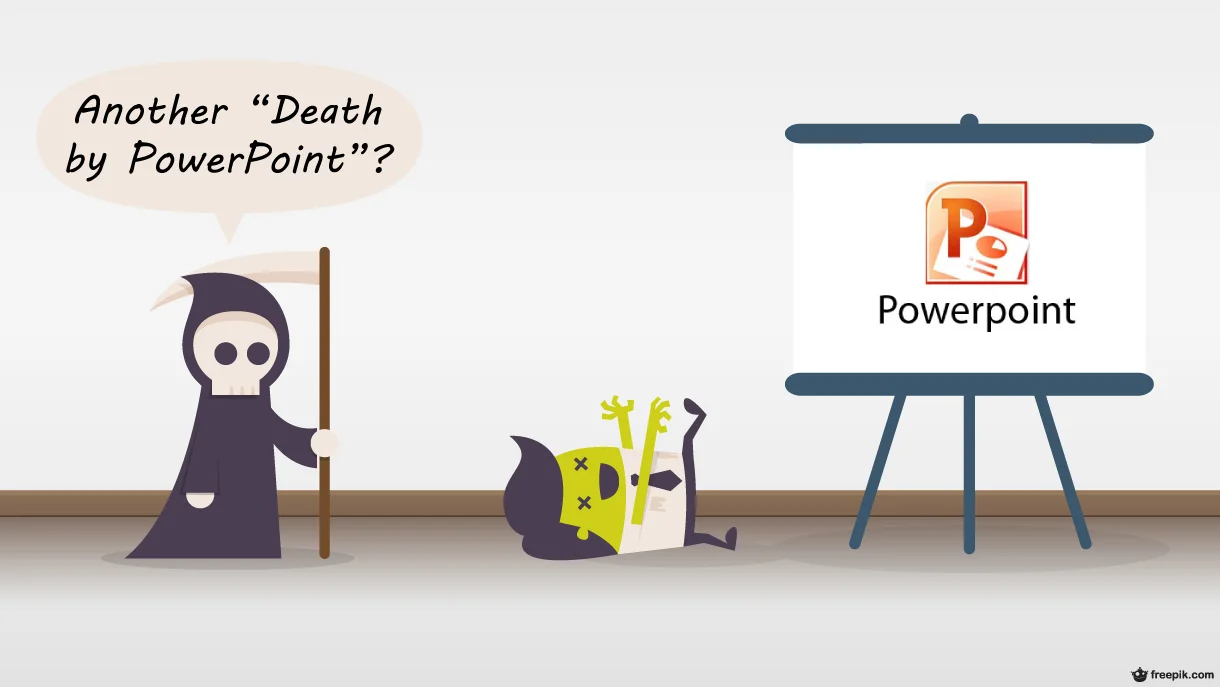The "Death by PowerPoint" Myth
The phrase "death by PowerPoint" is heard so frequently that many people believe PowerPoint to be an instrument of the devil. PowerPoint - an innocent tool brought to life by its user - is blamed for the large numbers of poor presentations delivered every day.
At Active Presence we don't believe this.
There are many articles on the web referring to the "death by PowerPoint", and you've probably read a few, or witnessed a successful colleague belittle the software using this phrase. The truth is (as we've discussed previously) poor use of any tool is not a reflection on the tool itself, and so too with PowerPoint. In this post, our objective is to dispel the common myths surrounding "death by PowerPoint".
Myth 1: "PowerPoint slides restrict my performance"
Some people claim that PowerPoint restricts their performance and reduces audience engagement and interaction. This can be true for poorly designed presentations - for example, slides containing bullet point lists. However, well used, PowerPoint is able to support the presenter's message and increase the amount remembered by the audience.
To expand on bullet point lists (and text heavy slides in general) for a moment: slides of this sort leave the audience torn between listening to the speaker or reading the slides - they can't do both. As it's quicker to scan the slides, audience members frequently do this and ignore the presenter's spoken message. Essentially, the words on the slides rob the presenter of his or her job.
Slides that support the presenter's message enhance the overall performance. The combination of the spoken word and supporting graphics increases audience attention and the likelihood of the message being remembered.
Myth 2: "Slides are like scripts, and I like to have a fluid presentation"
The first point to make is that talking of PowerPoint slides and scripts in this way is to confuse two entirely different concepts - although it's something that's frequently confused. Effective PowerPoint slides support the spoken message. PowerPoint is not a script writing tool.
The second point concerns structure. Having a good structure to your presentation will help ensure that nothing is forgotten and key messages are clearly communicated. Delivering a presentation entirely 'off the cuff' is a risky business. The presenter runs the risk of his or her message being a scrambled mess. The lack of preparation becomes clear to the audience, who not unreasonably feel that their time is being wasted and that they're being treated disrespectfully.
Myth 3: "There's nothing impressive about pretty pictures or making objects fly around the screen"
While this largely depends on your point of view, it's certainly true if the pictures or animations don't support the central message. Just as every word in a well written book plays a part, so every graphic element in a presentation should fulfill a purpose. Carefully consider usage of stock photography, transitions and animations. Used well and in sympathy with your message and script, they can add a useful dimension to your performance.
Myth 4: "Not all venues have the appropriate technology - and anyway, it's just not reliable"
It's true that technology does fail. You might be able to save the day by using some standby equipment, or you may simply decide to go ahead without any supporting technology. The real point is this: a well prepared presenter won't be fazed by this problem. The presenters that are caught out are those who are ill prepared and rely on their slides to keep them on track and prompt them as to what to say next. Nothing beats being well prepared.
So there you go, that's why we don't believe in "death by PowerPoint" at Active Presence. We hope you don't either and we welcome your views, thoughts, comments, observations, etc. below.

